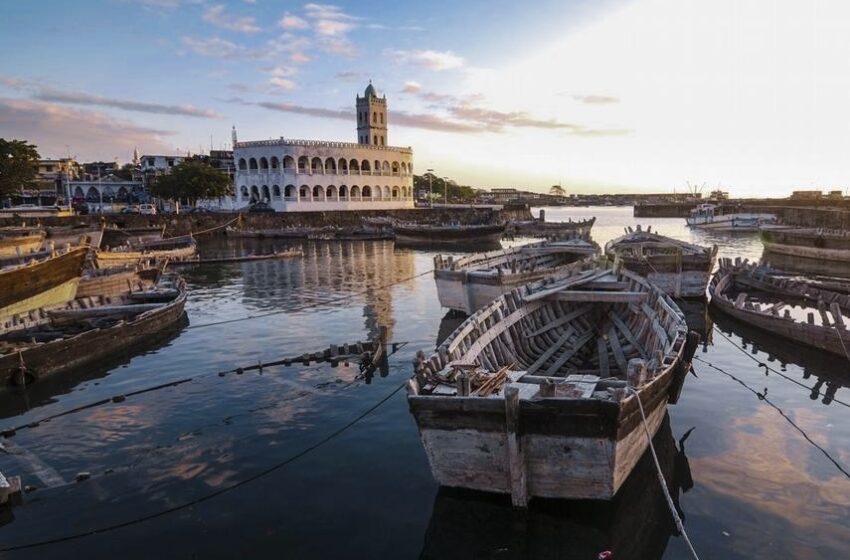
Comoros’ Only Travel Guide You Need For A Great Trip in 11 Easy Steps
- Destinations Africa
Cruisit Team
- July 17, 2022
- 0
- 4787
- 66 minutes read
Comoros’ Background
An advanced indigenous civilization with communities like Chibchas, sub-Andean, and subsequently invading Caribs when the Spaniards first arrived in Colombia. The Spanish empire entered Colombia in 1525 establishing Santa Marta, followed by Cartagena in 1533 and Bogota in 1538, with almost all colonial cities constructed by 1539.Colombia’s indigenous population was exploited by the Spanish crown from the early 16th century until the 17th century, when it was part of the Viceroyalty of New Granada which also included Panama, Venezuela, and Ecuador known as Gran Colombia. After the French invasion of Spain in 1808, there was an outpouring of uprisings, particularly in Bogota (remembered as Colombia’s Independence Day), and a succession of civil conflicts. Between 1840 to 1903, the nation was wrecked by a brutal revolution and terrible conflict.
Colombia was one of the nations that emerged from Gran Colombia’s fall in 1830. During the 1990s, a 40-year rebel struggle to destroy Colombia’s government accelerated, fueled in part by funding from the drug trade that had wrecked the country for years. Despite the fact that the violence was unsafe and that wide areas of the countryside were under guerilla control, the movement lacked the military power and public support required to overturn the government. In recent years, an anti-insurgent force of paramilitaries has developed to several thousand strong, battling the insurgents for control of territory and the drug trade, as well as the government’s capacity to exercise authority over rural regions. Bogota intensified attempts to reestablish government authority across the country when neighboring countries were concerned about the bloodshed spilling over their borders.
That being said, It’s difficult to find a country that has never been colonized or had any civil or colonial battles, and as a result, all countries in the globe have had some form of bleak past filled with either domestic warfare or foreign intrusion by colonizing nations. Nonetheless, a country is considered resilient when it always gets back on its feet, and most countries throughout the world have done so, and Colombia is doing it in a big way lately. The country of Colombia has finally opened up to the rest of the world like never before since the end of its decades-long civil war with the FARC guerrillas in 2016 but not too many people know that.
If you want to visit Colombia but aren’t sure what you’ll need to know about getting there (or travelling around the nation), this Cruisit article will help you. If, on the other hand, you’re not sure why you should travel to Colombia in the near future, this is the travel blog for you.
Located in northern South America, Colombia controls the border between Central America and South America. It also has a shoreline on both the Caribbean and Pacific oceans. Colombia is an extremely diversified location with a wide diversity of landscapes, cultures, and tourist attractions. Beginning in Bogota, you may go on an adventure rich in art, architecture, gastronomy, and shopping. You may go for one or two hours in nearly any direction from there and find yourself in a different scenery and climate, much like Mexico.
“Colombia, a civilization with its importance firmly instilled in the past and a deep and sometimes dark history dating back thousands of years. With diversity seen in shades of all colors and scenery ranging snow-capped volcanos to dense forests.“
Coffee is one of the most significant exports, and maybe the most popular in the world. Colombian coffee is famous for its rich flavor, which is due in part to the volcanic soil found in this region immediately west of and near to the Andes. But, that is not reason enough for someone hesitant to go to Colombia, so, read ahead.
Colombia will lead you to classic historical places in a country that has recently gained its reputation as a totally diversified paradise and one of the greatest South American countries to visit. With its warm smiles and its priceless Pacific and Caribbean oceans, this country galvanizes the majestic grandeur of the Andes Mountain Range, the Amazon, and its countryside. Despite its turbulent and mythical history, the country has managed to shed its past and earn a position among the finest South American locations to visit. Colombia is now safer to visit like the vast majority of nations worldwide, and as the country’s slogan goes, “the only danger is wanting to remain.” and that is a big threat when you see Colombia for yourself.
While Colombia gained independence from Spain in 1819, numerous massive elements of the Spanish empire’s existence continue to this day. These are seen in the numerous forts, castles, and architectural styles that can still be observed at different visiting attractions, the largest and most prominent of which can be found in the seaside city of Cartagena.
Colombia’s tropical location provides it with a diversity of scenery that only a few countries can equal. A minor elevation change transports you from the sun-toasted Caribbean shores to the coffee-strewn, emerald-green hilltops of the Zona Cafetera. Continue climbing until you reach Bogotá, Colombia’s bustling cradle and the world’s third-highest capital city. Add a few thousand meters and you’ll find snowcapped summits, high-altitude lakes, and the spooky, one-of-a-kind páramo flora (high-mountain plains). The Andes give way to Los Llanos, a 550,000 m2 region of tropical grasslands shared with Venezuela and known as the Serengeti of South America. Soaring Andean peaks, pristine Caribbean shoreline, enigmatic Amazon jungle, pre-Columbian architecture, and diverse populations. Colombia embodies the allure of South America, and much more.
If you’re seeking contemporary cities with a rich past, head to the Colombian Caribbean. There are also several diving and hiking options there. To the east, vast plains covered with tropical savannas, woodlands, and marshes. This is one of the least frequented areas in the country. Tropical woods, fascinating marine life, and some of the country’s greatest party cities may be found along the Pacific Coast. If you’re searching for a tropical location with superb diving, head to the Colombian Islands.
Colombia’s diverse landscape is ideal for outdoor adventurers looking to dive, climb, raft, hike, or soar. San Gil is the uncontested adventure center, but Colombia has outdoor delights in every direction. Some of the continent’s most iconic hiking is found here, and it is vastly different: Ciudad Perdida is a multi-day jungle trek to the ancient Tayrona civilization’s remains, while many ascents inside Parque Nacional Natural El Cocuy take adventurous hikers to the highest levels of the Andes. Scuba divers will love Providencia’s world-class reef, while whale-watchers on the Pacific coast may witness gorgeous humpback whales in the wild.
Throughout Colombia, a plethora of ancient civilizations have left behind a remarkable array of archaeological and cultural monuments. Ciudad Perdida, the former Tayrona capital erected between the 11th and 14th centuries, is one of the continent’s most ancient towns, probably second only to Machu Picchu. San Agustn is also mythological, with more than 500 life-sized antique carved figures – some 5000 years old and of unexplained provenance – dotting the surrounding area. Then there’s Tierradentro, where exquisite underground tombs excavated by unknown people add to Colombia’s mystery.
In terms of climate, there is truly something for everyone. The climate is tropical along the shore. This is also true in the Amazon and the eastern plains. The temperature is substantially cooler in the highlands, and there are dry spells with little rain. Although winter is commonly known as the rainy season, this is not true in all sections of the nation. Pack clothing appropriate for various temperatures and regions.
Colombia’s reputation as a dangerous and violent country persists, although the fact is that the situation has much improved after the 1990s when Pablo Escobar was no more. There are still certain areas to avoid, but the majority of the country is inviting to travelers and provides a unique travel opportunity.
We recommend you give Colombia a chance to enchant you, but also, we think you need at least 2 to 3 days in each city to get a taste of what Colombia has to offer tourists. If you think this country is worth the try, then you have made a great choice. Read ahead for more information about everything you need to know from hints and tips, what to see, where to go, where to stay, safety, and much more about Colombia.
- Mohéli, the smallest and most intriguing of the Comoros Islands, is worth a visit.
- Visit Fomboni, Mohéli’s biggest city.
- Visit Anjouan, the Pearl of Comoros.
- Consider what might happen if Mount Karthala, the world’s biggest active volcano, erupted.
- In Petite Terre, mingle with foreigners living in the country
- Relax at Chomoni Beach in Gradn Comore.
- Visit Moroni’s Grand Mosque.
- Visit the Comoros National Museum.
- Take a hike at Mount Karthala
- Plage de Moya is a great place to unwind and enjoy the sun
- The beautiful corals of Moheli Marine Park are a fantastic area to go snorkeling.
- Where else in the world can you swim with humpback whales without being surrounded by tourists? Comoros is the answer
- In Comoros, it is practically impossible to book anything online
- The people of Comoros are very kind and friendly.
- Because Comoros is a Muslim country, dress modestly.
- Because ATMs are few, carry cash.
- Despite its dark history, Comoros is reasonably safe.
- The voltage in Comoros is 220 volts.
- Direct flights are difficult to find, typically only from Kenya and Tanzania, but connecting flights are available from anywhere.
- The official languages are French and Arabic, but most Comorians speak their own language known as Shikomor (Comorian).
- This is the world’s third poorest country, with one of the lowest wages, so keep that in mind.
Crime & Scams in Comoros
Although crime is rare, you should take reasonable measures against pick-pocketing and mugging. Avoid strolling alone in the middle of the night on beaches or in town centers. Keep valuables and cash safe. When feasible, use hotel safes. Although homicides have not been recorded in years, break-ins are widespread.
Be vigilant, particularly if you are in public places used by foreigners, near official buildings, crowded attractions, or public transportation. Avoid poor areas of the city. Take care on city streets, especially after dark or if you are on your own. Don’t carry large amounts of money or wear valuable watches or jewelry. Avoid using your mobile phone in the street.
The Karthala volcano near Moroni on Grande Comore erupts periodically, most recently in January 2007. Although there are no predictions of an imminent eruption, you should check the situation locally before making plans to visit the island.
Healthcare in Comoros While Traveling
Comoros is one of the world’s poorest, with no organized healthcare system, therefore medical centers are inadequate and fall short of international norms. Public facilities are in disrepair, are understaffed, and are lacking in medical supplies and equipment.
Before every trip, make sure you are up to date on all routine vaccinations. Among the key recommended vaccines globally are chickenpox (Varicella), diphtheria-tetanus-pertussis (DTP), influenza (flu), measles-mumps-rubella (MMR), polio, hepatitis, typhoid, and shingles. If you will be in contact with wildlife, you may want to consider getting a rabies vaccination.
When visiting Comoros, you are not legally required to purchase travel medical insurance. However, it is always important to have comprehensive medical coverage when traveling because you never know what you could encounter while overseas, especially in Comoros where medical care is underfunded and poor, and in cases of emergency, you might need to be evacuated.
Consume only foods that have been prepared and served hot, avoid buffet food, and eat raw fruits and vegetables only if they have been rinsed in clean water or peeled.
Only consume liquids from factory-sealed containers, avoid ice since it may have been created from contaminated water, and only drink pasteurized milk.
Wash your hands often with soap and water for 20 seconds, especially after using the restroom and before eating. If soap and water are unavailable, use an alcohol-based hand sanitizer with at least 60% alcohol. Keep your hands away from your face and lips as well.
Comoros has a tropical climate, which allows tourists to enjoy beautiful weather all year. The island nation has two different seasons: dry and rainy. The wet season is a less favorable phase in Comoros when the weather gets rainy and the risks of cyclones increase. Temperatures typically vary from 21°C to 31°C throughout the year, with temperatures seldom dropping below 20°C or going over 32°C.
Meanwhile, locations such as the capital, Bogota, which is located in significantly higher elevations of the country, experience quite comfortable, somewhat colder weather patterns throughout the year.
Shoulder Season
In Comoros, the transitional months are November and May, when the climate begins to shift. The weather can get quite hot, and there are more clear skies than in the off-season, yet it may rain once or twice or not at all during your visit. If Comoros experienced the benefits of tourism in the same way as the rest of the world, November and May can be considered the shoulder season.
High (Peak) Season
From June through October, the weather in Comoros is warm and pleasant, with clear skies, low humidity, and minimal possibility of rain. Visitors may experience the tropical atmosphere in the driest and balmiest circumstances. The ideal season to visit Comoros is from June to October when the weather is dry, warm, breezy, and mainly clear. If Comoros had widespread tourism, the peak season would most likely be from June to October which is the best time to visit Comoros.
Off-Season
The rainy season in Comoros, which is the off or low season, begins in December and lasts until late April. The weather is hot and humid. The sky will be overcast, gloomy, and humid for the most of the day. The sun may occasionally peep through. In January and February, the rains are more heavier. Visitors should be warned that Comoros is positioned in the cyclone belt and is vulnerable to storms between January and May. Cyclones strike Comoros three times every year, with the most recent one hitting the islands in 2019. Although harsh weather and cyclones might strike the islands at any moment, it is worth mentioning that Comoros has only had three cyclones since the late 1970s. Comoros only had 3 cyclones that had a direct hit to the islands mostly in January and March, but some have occurred in December, April, and February.
A Comoros visa is granted on arrival at Moroni airport for almost all nationals. The cost is €30 or $50 in cash. Because change may not be granted, have the correct amount in cash. Also, there are no ATMs or currency exchange offices at or near the airport, so make sure you have enough cash for a visa before you arrive. The immigration form requires you to fill down a place of dwelling in Comoros throughout your stay.
By Plane
The major airport in Comoros is Prince Said Ibrahim International Airport. There are 8 airports worldwide with direct flights to Moroni, located in 8 locations across 6 countries. Tanzania offers the most economical flights to Comoros. Egyptair, Kenya Airways, Air Tanzania, Ethiopian Carriers, Air Austral, EWA Air, and Int Air Iles are the seven airlines that fly straight to Moroni. There are no nonstop flights from the United States, Canada, South America, Central America, the Caribbean, the Middle East, Southern Asia, China, Japan, Eastern Asia, South-Eastern Asia, Central Asia, or Oceania to Comoros.
By Boat
There is no official passenger transportation to and from Comoros, however, there are several cargo ship choices. For example, boat travel to and from Madagascar and Comoros is available. It will take a lot of effort and patience, but it is possible. You could even be able to obtain work as a crew member aboard a boat. It’s a long ride, so be prepared and bring seasickness medication with you. If you are going from Eastern Africa, the major destinations to hunt for cargo boats to Madagascar or Comoros are Mombasa (Kenya) and Zanzibar (Tanzania). It’s also feasible to get passage aboard a boat sailing from South Africa, Réunion, or Mauritius, or even all the way from France to Mayotte or Madagascar in exceptional situations. However, this is just for sea fans who wish to avoid flying at all costs.
By Plane
Turboprop planes are used to transport passengers between the islands, but keep in mind that they are frequently canceled. There are currently two domestic flights to Moroni.
By Car
There are rental cars available exclusively on the main island, Grande Comore, however they are quite pricey. Although most roads are paved, certain interior roads can become slick after heavy rains, and animals on the narrow lanes can exacerbate the situation. You must have an international driving permit and drive on the right side of the road.
By Bus
Comoros has no bus system, thus the only method to move around except hiring a vehicle is by taxi-busses, which are shared taxis. Services are available in certain areas, but less so in more rural areas or on the outer island. A shared cab in Moroni will cost you between 250 and 500 KMF.
By Boat
There are frequent freight and passenger services connecting the islands, although they are sluggish and unpleasant. However, they are inexpensive. The primary connections from Grande Comore are Moheli and Anjouan. The Chindini Harbour, located on the southern point of Grande Comore, is where you may board a boat to Moheli. There are four boat journeys to Moheli each day, which take around two hours if the sea is calm. You must register your passport with the harbor police before departure. The cost, however, is extremely high, at roughly $75 or more, and the domestic flight option (costing the same) is frequently canceled, putting you in a difficult situation.
SIM Cards & Calls in Comoros
If you wish to get a SIM card in Comoros, Comoros Telecom or Telma are both viable options. Comoros Telecom has a somewhat larger network (2G & 3G) than Telma. Telma, on the other hand, boasts reduced costs and a larger 4G/LTE network. Comoros Telecom’s prices start at 500 KMF for 50 MB, but we all know that doesn’t get you very far these days, so for 5000 KMF (10 USD), you can buy a gigabyte of data and local minutes good for 20 days, which is more than enough for your stay in Comoros. However, for data only, prices might range from 1000 to 2000 KMF for 500 MB to 2 GB of data. Telma gives more data and overall packages, with 1000 KMF getting you 1 GB of data for 7 days and 2000 KMF getting you 3 GB for 7 days.
Alternatively, you may also get a prepaid eSim card from a company like Airalo, SIMCorner, HolaFly or Nomad. All the providers offer data-only plans that may be used with an eSim-enabled phone, so make sure your phone is compatible. It is also possible to sign up for a Solis WiFi Hotspot. Check before you travel because they only serve select areas. Airalo provides the most extensive coverage of over 180 nations.
Local Internet & WiFi in Comoros
When visiting Comoros, don’t anticipate much in terms of internet access. Your best chance is to go to a hotel and utilize their free internet if you buy a couple drinks. Otherwise, go to the “New Select” restaurant on Moroni’s main plaza. Speeds are typically about 1 Mbps, which is modest but adequate. Mobile speeds, on the other hand, average approximately 10 Mbps.
Top Places in Comoros
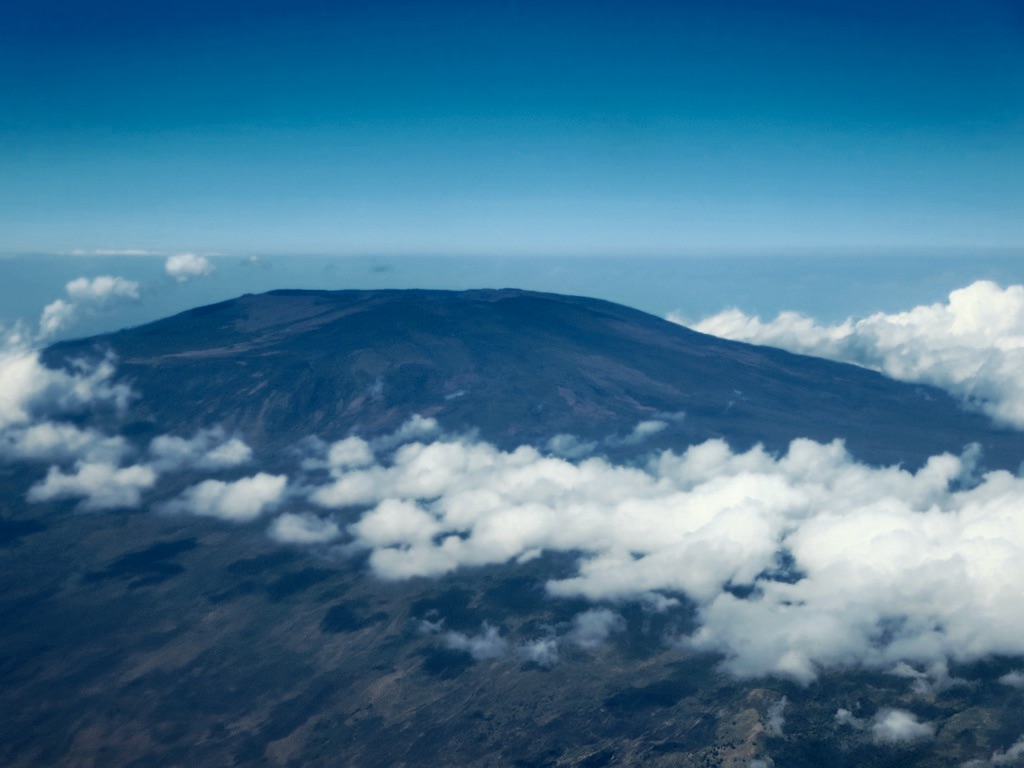
Mount Karthala
Mount Karthala, sometimes known as Karthola, is an active volcano and the highest peak in the Comoros, rising 2,361 meters above sea level. It is the biggest of the two volcanoes that make up Grande Comore island. The Karthala volcano has erupted more than 20 times since the nineteenth century. The volcano’s 3 km by 4 km top crater has been sculpted by repeated eruptions, although the island has mostly avoided widespread catastrophe. Eruptions in 2005 and 2006 brought an end to a period of relative peace.
Lac Niamawi
According to legend, this distant, “bottomless” lake was created by a curse. A turquoise saltwater lake rests in a crater mere yards from the pristine ocean, near to the little settlement of Mitsamioli on the northern point of Grand Comore. This little lake, known as Lac Salé or Lac Niamawi, was most likely formed in the 16th century as a result of volcanic activity from neighboring Mount Karthala.


Mosquée Mssihiri wa Cheik Ahmed
Mssihiri wa Cheik Ahmed Mosque is a sacred and religious site in Moroni, Grande Comore. The Mosque is located on the shores of Moroni. Admire the basic yet enchanting architecture, standing on the Indian Ocean’s coastlines. The bright white walls contrast with the blue water, and the many arches add a rhythmic appearance. Look for the elaborate windows in the back and the vivid green dome that points to the sky.
Plage de Moya
Plage de Moya is a pristine and uncrowded beach that will make you feel like you’re on your own. It’s located just outside of town and has white sand and clear, shallow water that’s great for swimming. Bring some food and have a picnic while watching the infinite ocean.
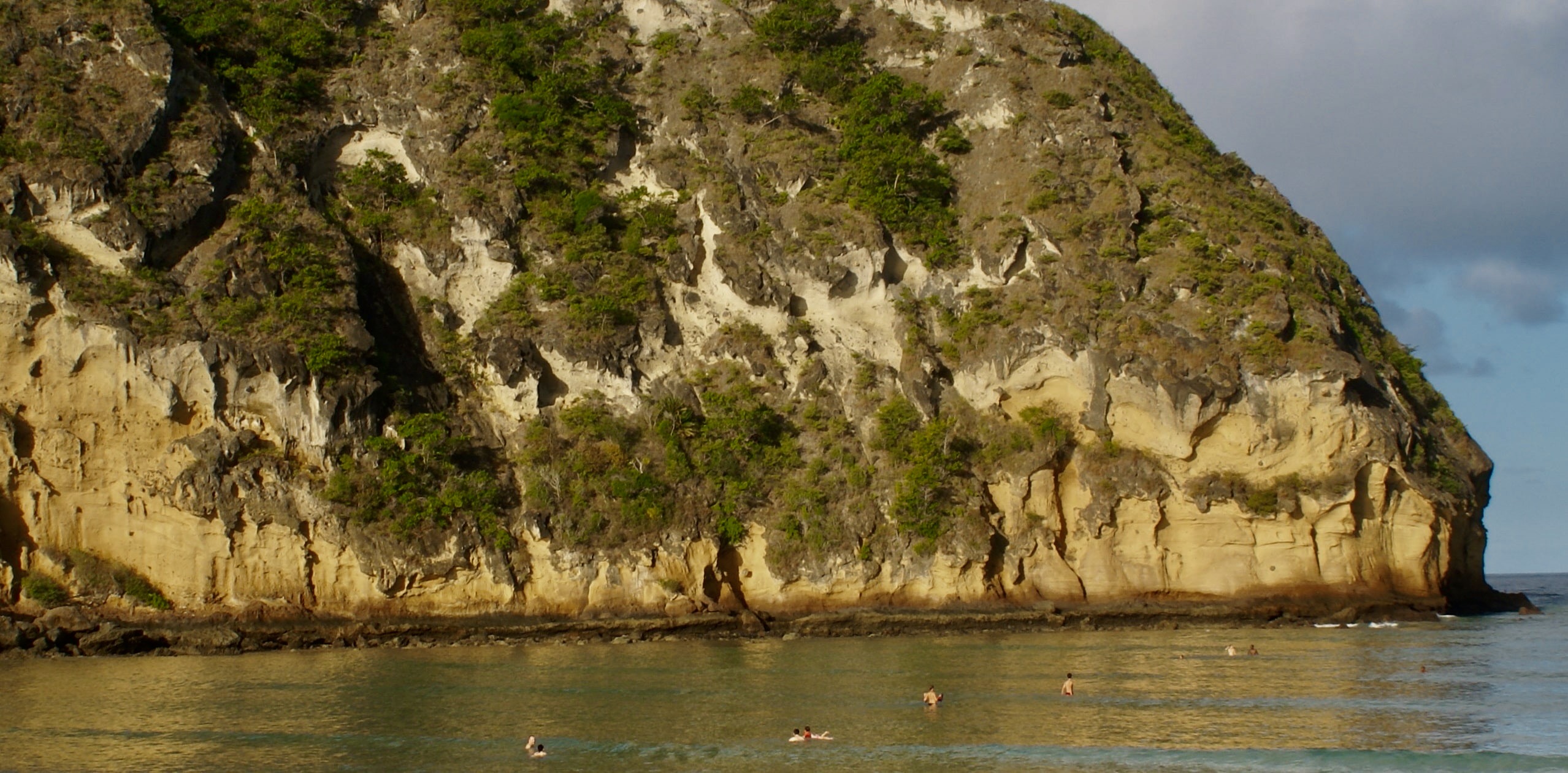
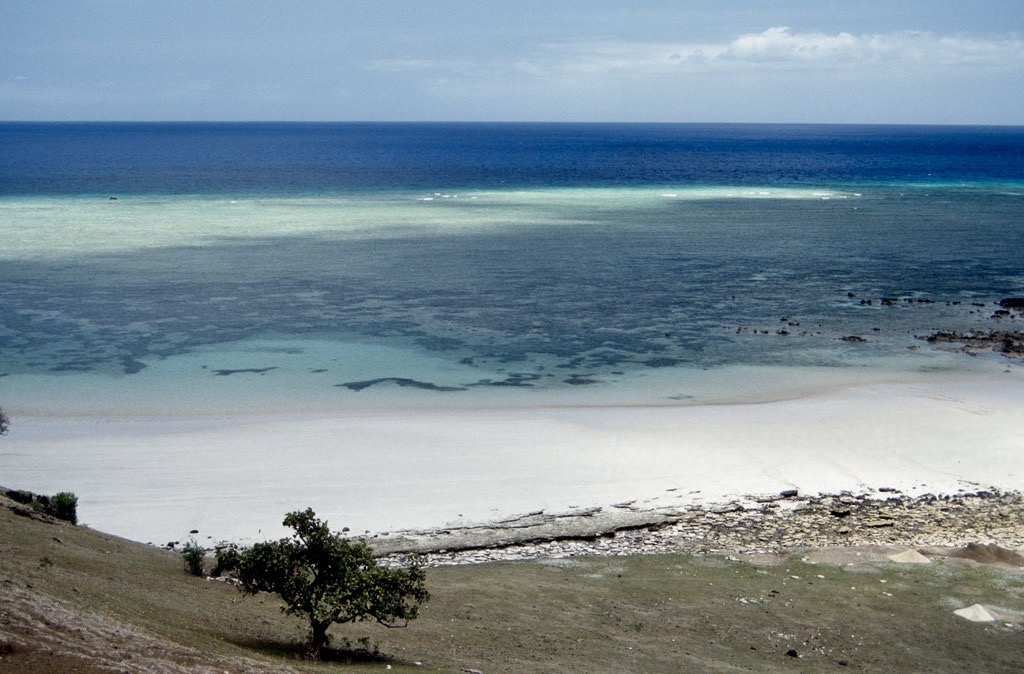
Chomoni Beach
Chomoni Beach, with its paradisiacal backdrop of turquoise water and pristine white sand, provides great snorkeling and plenty of leisure. Swim or bring snorkeling gear to explore the warm waters and rich marine life, then relax on the beach and stare out at the volcanic rocks that dot the little harbor. Consider an overnight stay in one of the rustic cottages along the ocean and a feast of fresh lobsters and seafood collected and prepared by the locals.
8-day Itinerary in Comoros
Day 1
Arrive in Grande Comore
Arrive at Moroni airport and take a quick tour of Grand Comore’s vibrant city on your route to your accommodation. You may take it slowly and rest at any beach you like to prepare for the next day.

- Backpacker:
- Budget:
- Mid-range:
- Luxury:
Golden Tulip
When it becomes dark, a foreign city may be twice as dangerous - especially if you don't understand the language and are unfamiliar with the area. There is reason to be alarmed about walking home alone in the dark - there is enough crime recorded in Moroni to warrant anxiety. So always take taxis at night and never leave crowded areas to unlit alleys or streets.
This section will be added shortly. Refer to the transportation block in the top section.
Day 2
Hike up Karthala
After breakfast, head to the entrance of the jungle path into Karthala. From here, spend a day on an incursion deep into the island’s nature and through the forest and volcano at the center of Grand Comore, which last erupted about 15 years ago and supplies the nutrients (and beautiful black sand) of the green isle and seashore. Consider exploring with a veteran local guide in the archipelago. Look for rare species in the evergreen slopes, and also stop at the archeological site of “the dragon path” on the way back. You will need a moderate to a high level of physical fitness for this hike.



Day 3
History and Markets
To make the most of your time in Comoros, spend the day traveling the island, taking in the structures, mosques, marketplaces, history, native food, and secret beach spots. While around the markets, experiment with the island’s spices and tastes, such as Bourbon Vanilla, and munch on some Bintang. Exploring the history of the Comoran archipelago’s early inhabitants, Portuguese traders, Magellan, and all the way to Captain Cook and the Libertalia Pirates may tell you a lot about the country.
Day 4
Beach Day
After a substantial breakfast, drive around the island’s circle road to find hidden beach places in Comoros. Head to the ring road’s white and black sand beaches and surround the volcano for the remainder of the day, taking in some of the greatest and most remote areas to keep you going until nightfall. In the Comoros Isles, there is no admission charge to Bouni Beach and Village, Chomoni Beach and Village, and other beaches. For safety, try using boats in good condition only, and try not to stray away too much from the shore.
Enjoy snorkeling in the pristine reefs in Comoros and you might even see rare finds under the water.
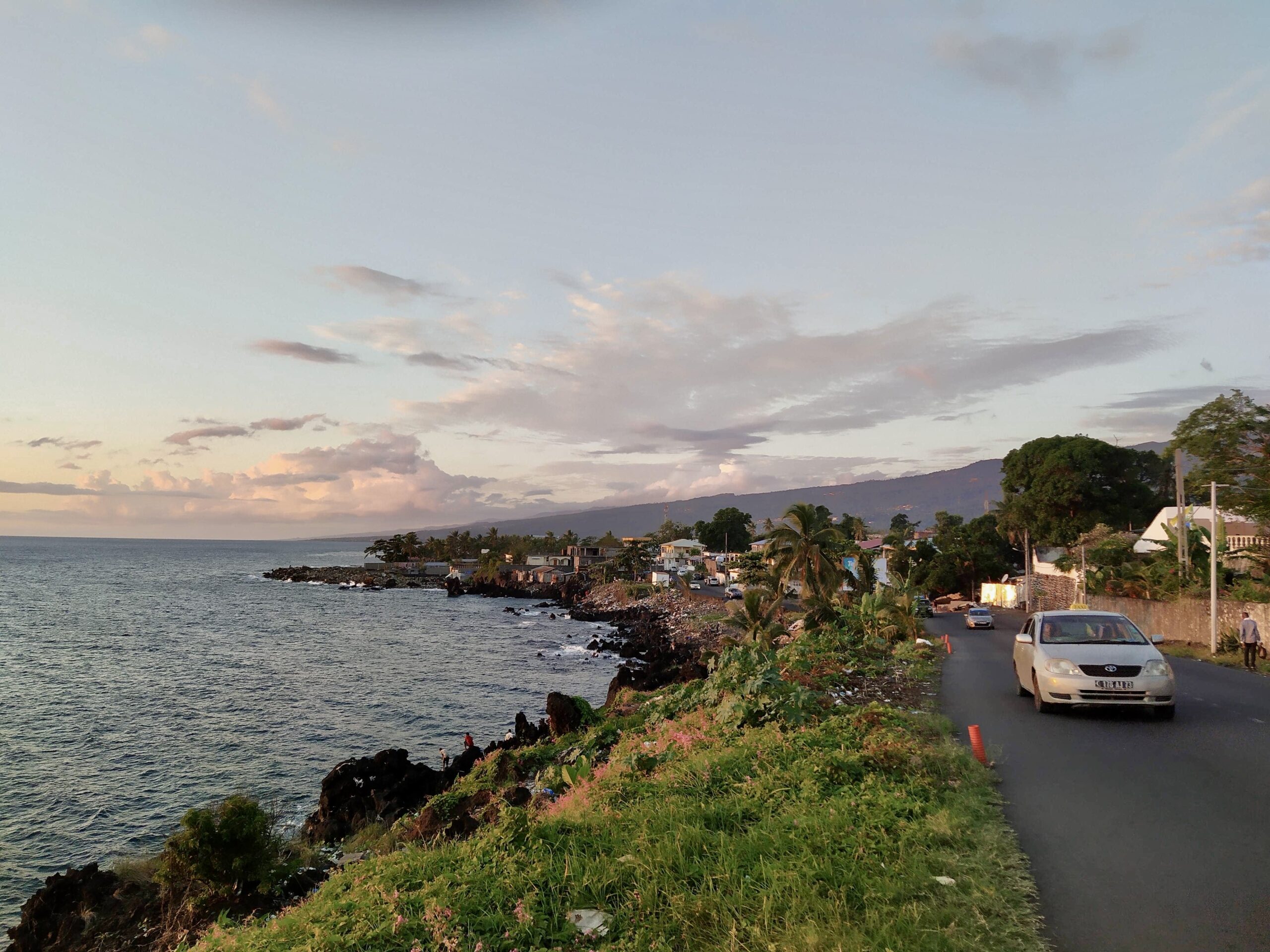

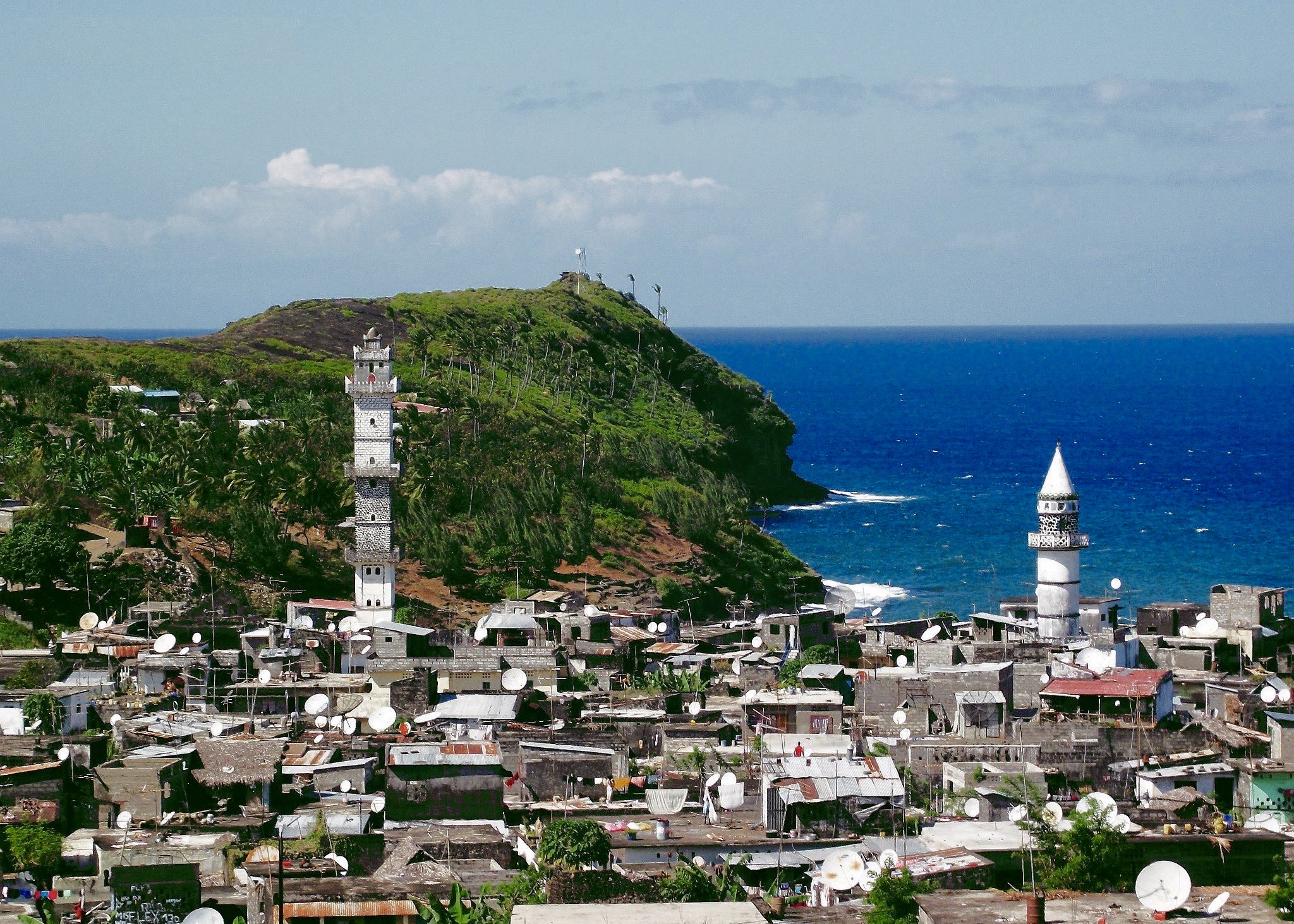
Day 5
Head to Anjouan
After a leisurely breakfast, go to Moroni airport for your journey to Anjouan. You will arrive at Matsumudu airport, have a quick tour of the city, and then check into your hotel to familiarize yourself with the surroundings, go to the beach if your hotel has one, and relax for the remainder of the day.
- Backpacker:
- Budget:
- Mid-range:
- Luxury:
Livingstone Hotel
When it becomes dark, a foreign city may be twice as dangerous - especially if you don't understand the language and are unfamiliar with the area. There is reason to be alarmed about walking home alone in the dark - there is less crime recorded in Anjouan but it's best to remain vigilant and take precautions. So always take taxis at night and never leave crowded areas to unlit alleys or streets.
This section will be added shortly. Refer to the transportation block in the top section.
Day 6
Hikes in Anjouan
After breakfast, proceed to the forest route that leads into the big mountain of Anjouan. Spend a day hiking deep into the island’s environment and through the forest and volcano in Anjouan’s heart, inhaling fragrances of perfumes and spices from the island and seaside. If you want to view uncommon animal and plant species, we recommend visiting the archipelago with a professional local guide. The walk requires a moderate to high degree of physical fitness.
We suggest that you sample the local lobster for lunch. When you’re finished, proceed to the volcanic lake atop Mt Anj for a refreshing respite and a glimpse of Anjouan’s natural surroundings. Bring enough water and food for the day because there will be no stores for the remainder of the day.
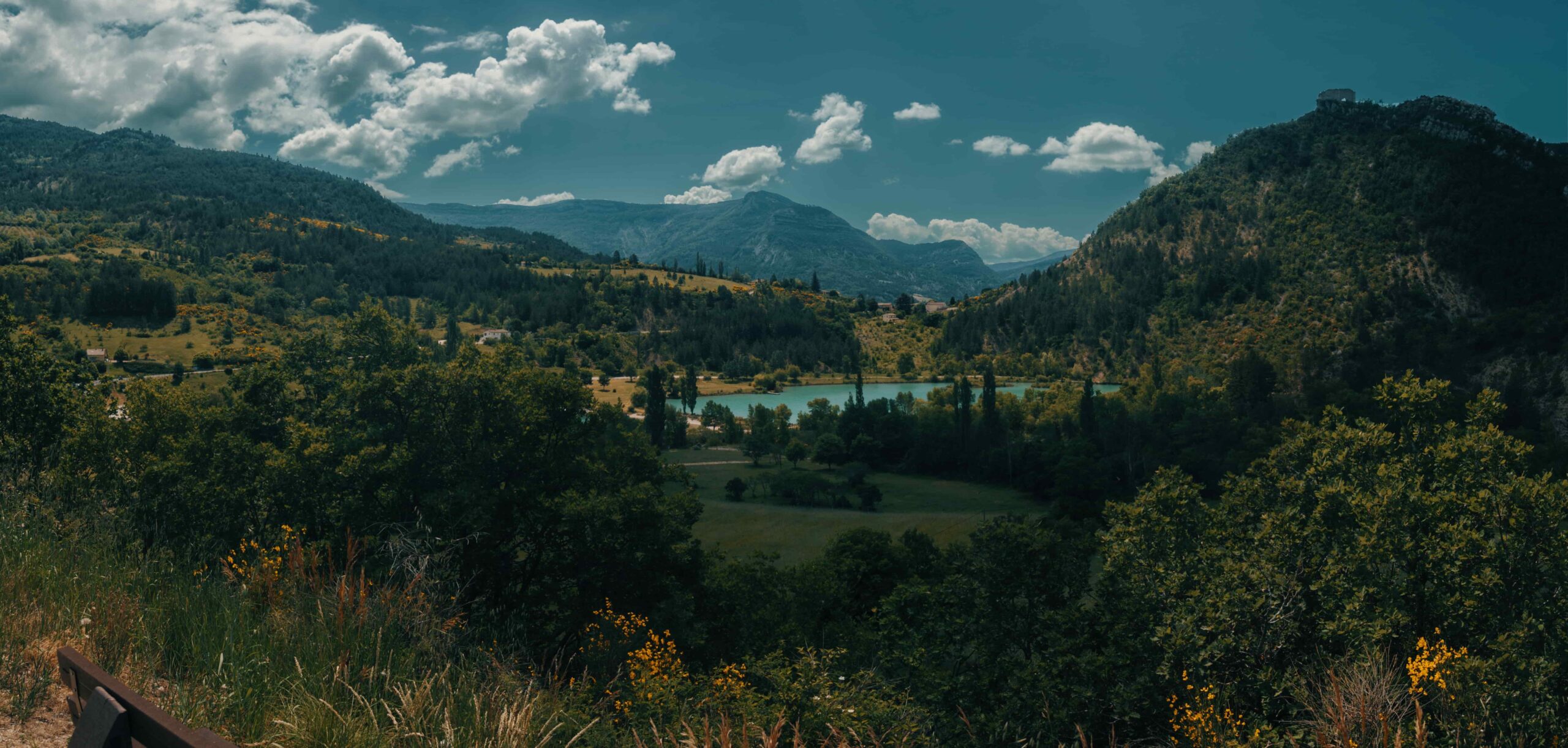
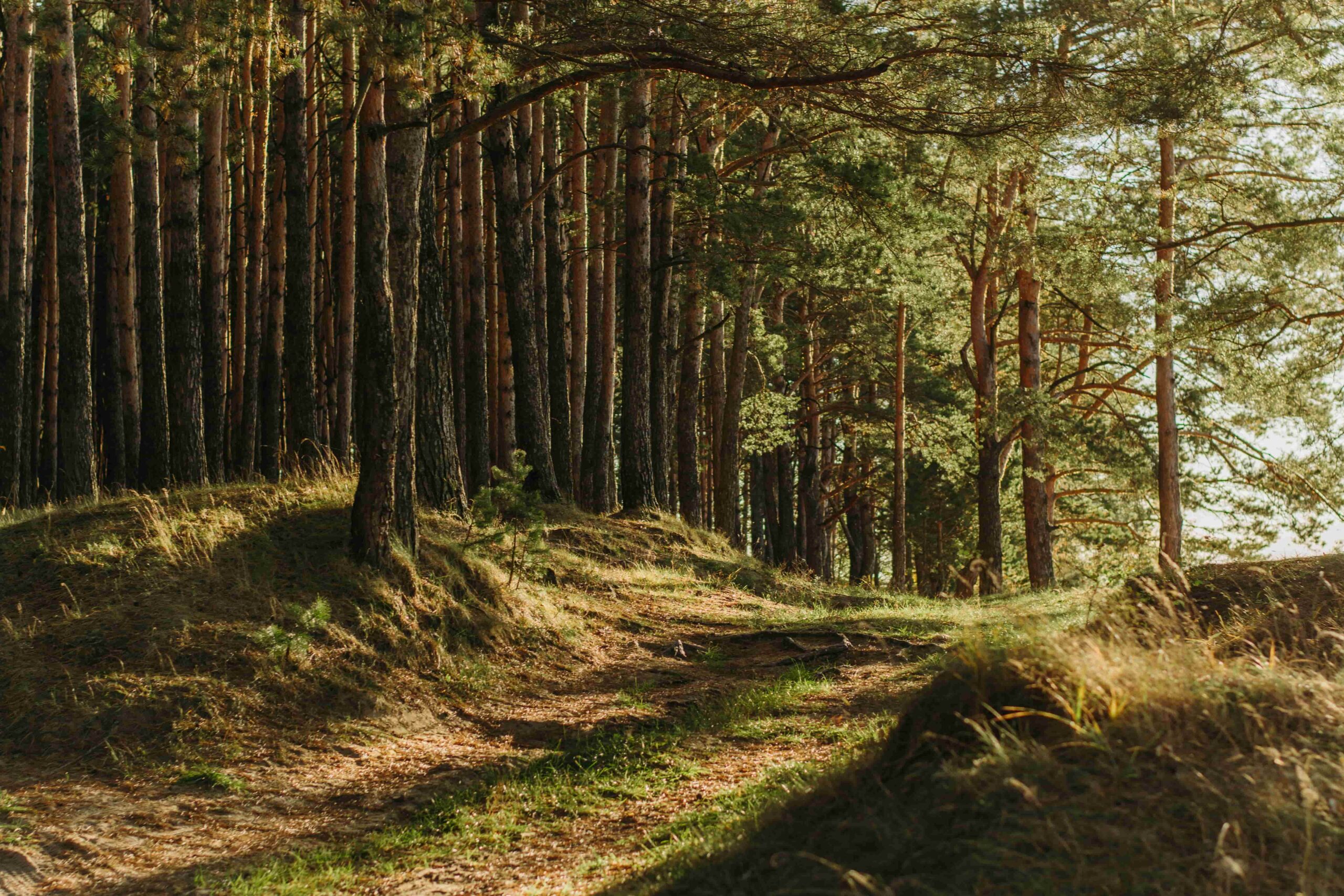


Day 7
Last day in Comoros
Begin the day with breakfast before heading to Mutsa’s medina. Then climb the maze’s heights for a panoramic perspective of the whole medina. Spend a day at Moya Beach, then explore the city of millennial Domoni with its carved doors and crafts. See the Comorian sultans’ territory and the plantations of Comorian fragrances and spices from the isle and beach, including vanilla and ylang ylang.
When the day is done, you may get dressed and fly to the airport to complete your trip, or you can stay and explore more. If that’s the case, you should go snorkeling or visit the Salt Island while in Anjouan. You might also wish to visit Fomboni, where you can swim with dolphins and possibly humpback whales if you’re lucky and in season.
The Most Popular Food in Comoros
Seafood, seafood, seafood, and perhaps some chicken. That is the majority of the cuisine of the Comoros Islands. The population, a mixture of African, Arab, Indian, and some French, have introduced the delicacies of their native homelands to the Islands in the centuries, adding to the culinary art of this magical country – receiving its name from what the Arabs fondly refer to as the “Islands of the Moon.”

Langouste A La Vanille
Comoros’ typical meal is langouste a la vanille. The primary components in this meal are fresh lobsters and vanilla beans. This dish is French in origin. Spinach, clove sprouts, butter, white wine vinegar, Vidalia onions, and salt and pepper are also used.

Mkatra Foutra
Mkatra foutra is a mouthwatering bread. The bread is fried and unleavened, prepared with coconut water. This flatbread is often served with honey, Arabic coffee, and other foods.

Mshakiki
Mshakiki, or grilled meat, is a delicate meal created from beef steak. The beef steaks are marinated in cubes first. After that, they are skewered and roasted. The meat is served when it is tender. Lemon, curry, tomato, turmeric, chili powder, ginger and garlic, and grated papaya are all needed for marination.

Achard Auc Legumes
Achard auc legumes, or pickled vegetables, is another well-known and traditional Comorian dish. There are two major methods for making these delectable pickled veggies.
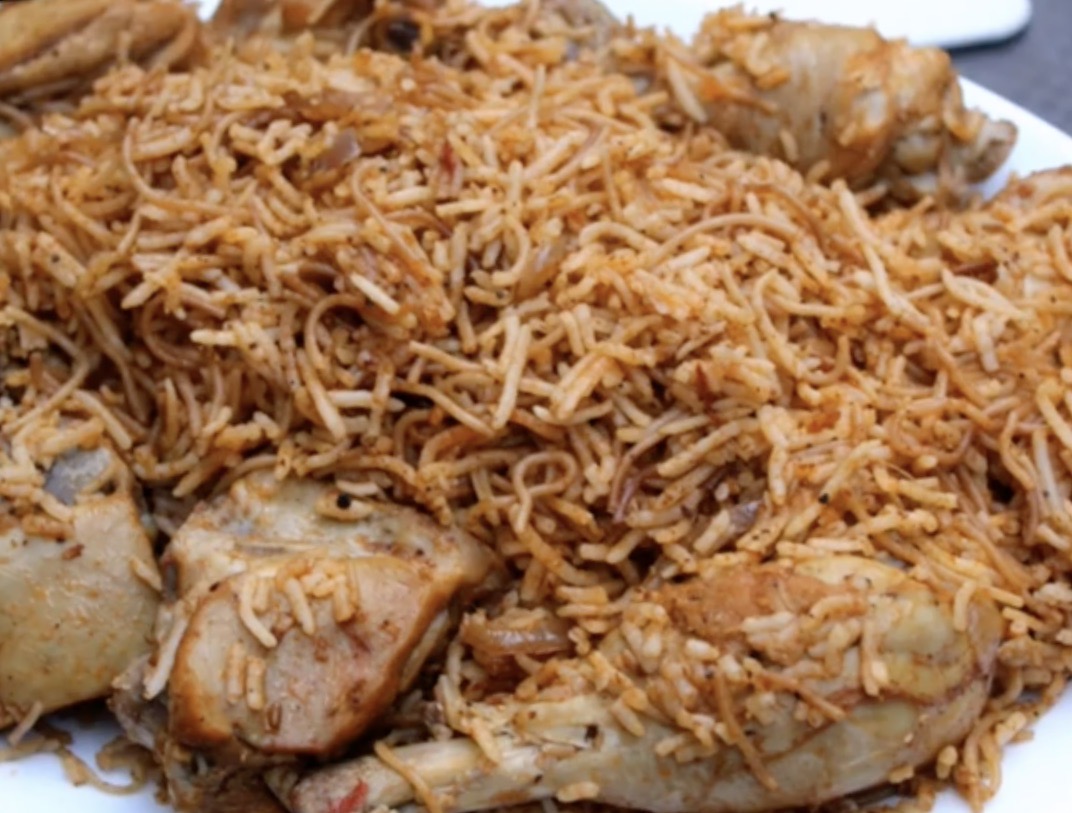
Comoros Pilaou
Pilaou is a fragrant and flavorful Comorian rice. It may be made with both meat and veggies. The original way of cooking is with beef, however individuals are now using plant-based protein such as chickpeas to make it vegan. Locals generally use beef for meat, although it may also be produced with other meats.
What's the Travel Budget for Comoros?
Flights
- Flights start at roughly $300 from nearby countries. Tickets however on average cost around $650 and can cost way more depending on which class and from which country you depart from.
Accommodation
- Nomad Backpacking style travelers can expect to spend around $120 for a week
- Budget travelers can expect to spend around $200 for a week
- Mid-range travelers can expect to spend around $450 for a week
- Luxury travelers can expect to spend around $930 for a week
Food Budget (Three meals and drinks)
- Nomad Backpacking style travelers can expect to spend around $15 per person per day
- Budget travelers can expect to pay around $25 per person per day
- Mid-range travelers on average would cost $30 to $40 per person per day
- Luxury travelers can expect to pay around $65 to $120 per person per day
Overall Budget Styles (Not including Flights, Tours, Transportation, or Car Rental)
- Nomad Backpacking style travelers can expect to spend roughly $250 for a week
- Budget travelers can expect to spend close to $400 for one person for a week
- Mid-range travelers can expect to spend approximately $760 for one person for a week
- Luxury travelers can expect to spend around $1,800 for one person for a week
Flights
- Flights start at roughly $300 from nearby countries. Tickets however on average cost around $650 and can cost way more depending on which class and from which country you depart from.
Accommodation
- Nomad Backpacking style travelers can expect to spend around $120 for a week
- Budget travelers can expect to spend around $200 for a week
- Mid-range travelers can expect to spend around $450 for a week
- Luxury travelers can expect to spend around $930 for a week
Food Budget (Three meals and drinks)
- Nomad Backpacking style travelers can expect to spend around $15 per person per day
- Budget travelers can expect to pay around $25 per person per day
- Mid-range travelers on average would cost $30 to $40 per person per day
- Luxury travelers can expect to pay around $65 to $120 per person per day
Overall Budget Styles (Not including Flights, Tours, Transportation, or Car Rental)
- Nomad Backpacking style travelers can expect to spend roughly $250 for a week
- Budget travelers can expect to spend close to $400 for one person for a week
- Mid-range travelers can expect to spend approximately $760 for one person for a week
- Luxury travelers can expect to spend around $1,800 for one person for a week
Flights
- Flights start at roughly $300 from nearby countries. Tickets however on average cost around $650 and can cost way more depending on which class and from which country you depart from.
Accommodation
- Nomad Backpacking style travelers can expect to spend around $120 for a week
- Budget travelers can expect to spend around $200 for a week
- Mid-range travelers can expect to spend around $450 for a week
- Luxury travelers can expect to spend around $930 for a week
Food Budget (Three meals and drinks)
- Nomad Backpacking style travelers can expect to spend around $15 per person per day
- Budget travelers can expect to pay around $25 per person per day
- Mid-range travelers on average would cost $30 to $40 per person per day
- Luxury travelers can expect to pay around $65 to $120 per person per day
Overall Budget Styles (Not including Flights, Tours, Transportation, or Car Rental)
- Nomad Backpacking style travelers can expect to spend roughly $250 for a week
- Budget travelers can expect to spend close to $400 for one person for a week
- Mid-range travelers can expect to spend approximately $760 for one person for a week
- Luxury travelers can expect to spend around $1,800 for one person for a week
Flights
- Flights start at roughly $300 from nearby countries. Tickets however on average cost around $650 and can cost way more depending on which class and from which country you depart from.
Accommodation
- Nomad Backpacking style travelers can expect to spend around $120 for a week
- Budget travelers can expect to spend around $200 for a week
- Mid-range travelers can expect to spend around $450 for a week
- Luxury travelers can expect to spend around $930 for a week
Food Budget (Three meals and drinks)
- Nomad Backpacking style travelers can expect to spend around $15 per person per day
- Budget travelers can expect to pay around $25 per person per day
- Mid-range travelers on average would cost $30 to $40 per person per day
- Luxury travelers can expect to pay around $65 to $120 per person per day
Overall Budget Styles (Not including Flights, Tours, Transportation, or Car Rental)
- Nomad Backpacking style travelers can expect to spend roughly $250 for a week
- Budget travelers can expect to spend close to $400 for one person for a week
- Mid-range travelers can expect to spend approximately $760 for one person for a week
- Luxury travelers can expect to spend around $1,800 for one person for a week
If you want to know what to pack, read this list below:
- This is a conservative tropical island nation that can get extremely hot or too rainy and windy, dress accordingly
- Raincoat or Light Waterproof Jacket
- Hiking Boots or Sturdy Sneakers (Shoes You Don’t Mind Getting Wet)
- Sunscreen
- Insect Protection – Repellent and Clothing
- Sunglasses and Sun Hat
- Water Shoes
- Beach Towels/Sarong
- Dry Bag
- Money Belt or Cross Bag
- Portable Medical Kit
- Flashlight or Headlamp
- Copies of your passport.
- Get all the needed vaccinations before traveling
- A power bank is a must in any travel.
- Always have some cash with you just in case there are no ATMs and if you are dealing with a business that solely accepts cash
- Get yourself an adapter for your gadgets
- 1 toothbrush
- 1 tube of toothpaste
- 1 razor
- 1 package of dental floss
- 1 small bottle of shampoo
- 1 small bottle of shower gel
- 1 towel
- Deodorant
- Band-Aids
- Hydrocortisone cream
- Antibacterial cream
- Earplugs
- Tylenol
- Hand sanitizer (germs = sick = bad holiday)
- A key or combination lock
- Zip-lock bags
- Plastic bags (great for laundry)
- Universal charger/adaptor
- LifeStraw (A water bottle with a purifier)
- 1 dry shampoo spray & talc powder
- 1 hairbrush
- Makeup you use
- Hairbands & hair clips
- Feminine hygiene products
Clothing For Boys
- 1 pair of jeans or khaki pants
- 1 pair of shorts
- 1 bathing suit
- 5 T-shirts
- 1 long-sleeved T-shirt
- 1 pair of flip-flops
- 1 pair of sneakers
- 6 pairs of socks
- 5 pairs of boxer shorts
Clothing For Girls
- 1 swimsuit
- 1 sarong
- 1 pair of stretchy jeans
- 1 pair of leggings
- 2-3 long-sleeve tops
- 2-3 T-shirts
- 3-4 spaghetti tops
- 1 light cardigan
Want to plan your own trip, here are some of the best resources that can help you
- Skyscanner – They search small websites and budget airlines that larger search sites tend to miss. They are hands down the number one place to start.
- Momondo – This is another favorite flight search engine because they search such a wide variety of sites and airlines. Always check here too.
- Booking.com – The best all-around booking site that constantly provides the most affordable and lowest rates. They have the widest selection of budget accommodation.
- Couchsurfing – This website allows you to stay on people’s couches or spare rooms for free. It’s a great way to save money while meeting locals who can tell you the ins and outs of their city. The site also lists events you can attend to meet people (even if you’re not staying with someone).
- Intrepid Travel – If you want to do group tours, go with Intrepid. They offer good small group tours that use local operators and leave a small environmental footprint.
- Grassroots Volunteering – For volunteering, Grassroots Volunteering compiles a list of good local volunteer organizations that keep the money within the community.
- Get Your Guide – Get Your Guide is a huge online marketplace for tours and excursions. They have tons of tour options available in cities all around the world, including everything from cooking classes, walking tours, street art lessons, and more! It has the world’s largest collection of things to do with more than 30,000 activities in 7500 destinations.
- SafetyWing – Safety Wing offers convenient and affordable plans tailored to digital nomads and long-term travelers. They have cheap monthly plans, great customer service, and an easy-to-use claims process that makes it perfect for those on the road.
- Trip Advisor: Check the reviews and then book your accommodation. TripAdvisor is where you go when you want to compare prices with multiple accommodation providers.
- VRBO: is the main search engine to use when you are looking for a home or apartment rental. It can sometimes be cheaper than hotels and it is the best way to stay in areas that offer a more local feel.
- Hostelworld: With one of the largest databases of hostels in the world, Hostelworld is the go-to site when you are looking for budget accommodation.
- Rome 2 Rio: If you want to see how to get somewhere by plane, train, bus, ferry, or car Rome2Rio lays it all out for you as well as related costs.
- World Nomads Insurance: When traveling you should always have travel insurance. We have found the best bang for your buck is by far World Nomads.
Final Thoughts on Comoros
Comoros has a sophisticated and rich heritage that is mixed between many different cultures and can be seen across the nation dating back to 6th century. With its old constructions left by its various aboriginal people, colonial history, spectacular and distinct landmarks, amazing hospitality, thrilling underwater scenery, and a breathtaking environment. A terrific alternative for anybody looking for a nice place to visit in Africa that gets few visitors. Comoros is stunningly lovely, with magnificent national treasures, fauna, and breathtaking landscape. Would you travel to Comoros?
Have you ever visited Comoros? Please leave your opinions in the space below.